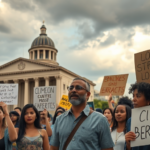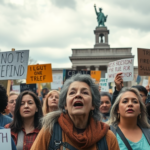Ongoing Fight for Diversity: Tulane Demographics Over Time
The battle for diversity at Tulane University continues as the institution endeavors to create a more inclusive and representative environment. Despite strides made over the past decade, the demographic shifts at Tulane reveal a slow progression toward the diverse student body it seeks. This ongoing fight for diversity affects not only Tulane but also the broader New Orleans community that it is nestled within.
Subtle Shifts with Significant Implications
In 2022, students of color represented 29% of Tulane University’s undergraduate body, a modest increase from 27% in 2012. This gradual change reflects the institution’s efforts and challenges in its commitment to diversity. Tulane, located in the vibrant city of New Orleans, is seen as a reflection of the city’s rich cultural tapestry, but the university’s demographic statistics still show room for growth.
Eugene Green III, a 2012 alumnus and native of New Orleans, shares his experiences as a Black student at Tulane. He reported facing microaggressions and perceived bias from faculty, such as being accused of cheating based on an unsubstantiated claim involving his attire. “I had to go through a whole process with the board, and I was found not guilty,” Green recounted, highlighting an instance indicative of deeper systemic issues.
University Initiatives and Alumni Perspectives
Tulane has developed initiatives to foster a more inclusive atmosphere, including multicultural organizations and the Office of Equity, Diversity, and Inclusion. By addressing racial and socioeconomic diversity, these programs aim to develop cultural awareness and support structures for all students.
Carolyn Barber-Pierre, vice president of student affairs and multicultural affairs, emphasized the importance of these initiatives. “I’ve seen significant change,” Barber-Pierre remarked, pointing to a renewed institutional focus on equity and inclusion. “But again, we still have a long way to go,” she acknowledged, underscoring the ongoing challenges the university faces.
Alumni like Green have noted the social dynamics that often emerge. “I was able to make friends easily, mainly because [we were a part] of the same ethnic group,” Green said, illustrating how shared experiences can foster community amidst challenges.
The Student Experience and Community Dynamics
Current students, such as first-year Harrison Nanigbo, report feeling excluded and isolated during campus activities like orientation. “I just kind of felt the sense that…they weren’t really interested,” Nanigbo observed of his predominantly white orientation group. These feelings reflect broader societal structures within the university and point to the necessity for genuine inclusivity.
Students like Nanigbo emphasize the importance of creating inclusive and empowering spaces for students of color at Tulane. Despite these obstacles, Nanigbo believes in the potential for community and support, asserting the need for personal and institutional efforts in building a supportive network.
Local Impact and Future Implications
The university’s demographic trends and efforts toward diversity have significant implications for the city of New Orleans and its residents. As Tulane strives to reflect the local culture and values of inclusivity, it influences perceptions and realities both on campus and within the city.
The slow pace of change raises questions about the effectiveness of current initiatives and highlights the need for broader systemic change. By committing to more vigorous efforts in diversifying its campus, Tulane has the potential to lead by example in the community, making significant strides toward equity and inclusion.
Local residents and alumni hold a stake in Tulane’s progress, as the university represents both a significant educational institution and vital economic entity within New Orleans. As Tulane’s demographic shifts continue to evolve, the potential impact extends beyond the university walls, contributing to the dynamic sociocultural and economic fabric of the city.
Future Directions and Resources
The ongoing efforts at Tulane serve as a reminder of the work needed to effect genuine change. Encouragingly, the university offers many resources for students to engage with and promote diversity, such as cultural organizations, speech series, workshops, and forums. These resources provide students with opportunities to connect, collaborate, and challenge existing conceptions, actively participating in shaping an inclusive university environment.
Looking ahead, the Tulane community faces the challenge of ensuring that diversity efforts translate into meaningful experiences and opportunities for all students. Initiatives that prioritize representation, equity, and inclusion are critical in uniting students of all backgrounds and instilling values that resonate far beyond the university setting.
**Community members and interested parties can access more information and engage with Tulane’s diversity initiatives by visiting the Office of Equity, Diversity, and Inclusion’s website or reaching out via their dedicated communication channels.** By promoting understanding and celebrating differences, Tulane has the opportunity to enrich not only the educational environment but also the New Orleans community as a whole.







